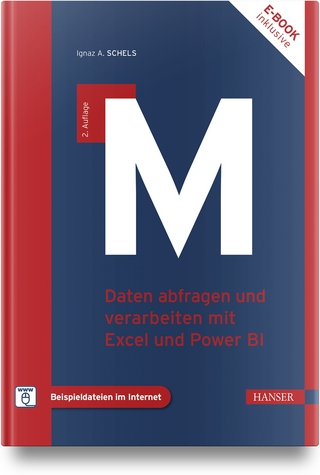
Shared Source CLI Essentials +CD
O'Reilly Media (Verlag)
978-0-596-00351-7 (ISBN)
- Titel ist leider vergriffen;
keine Neuauflage - Artikel merken
This concise guide offers a road map for anyone wishing to navigate, understand, or alter the Microsoft Shared Source CLI ("Rotor") code. Written by members of the core team that designed the .NET Framework, this book is for anyone who wants a deeper understanding of what goes on under the hood of the .NET runtime and the ECMA CLI. Microsoft's Shared Source CLI (code-named "Rotor") is the publicly available implementation of the ECMA Common Language Infrastructure (CLI) and the ECMA C# language specification. Loaded with three million lines of source code, it presents a wealth of programming language technology that targets developers interested in the internal workings of the Microsoft .NET Framework, academics working with advanced compiler technology, and people developing their own CLI implementations. The CLI, at its heart, is an approach to building software that enables code from many independent sources to co-exist and interoperate safely. The book is a companion guide to Rotor's code. It provides a road map for anyone wishing to navigate, understand, or alter the Shared Source CLI code.
This book illustrates the design principles used in the CLI standard and discusses the complexities involved when building virtual machines. Included with the book is a CD-ROM that contains all the source code and files. After introducing the CLI, its core concepts, and the Shared Source CLI implementation, Shared Source CLI Essentials covers these topics: the CLI type system; component packaging and assemblies; type loading and JIT Compilation; managed code and the execution engine; garbage collection and memory management; and the Platform Adaptation Layer (PAL) - a portability layer for Win32, Mac OS X, and FreeBSD.
David Stutz is currently working on the team that is implementing the Microsoft Shared Source CLI. He is also well-known for his kibitzing on the design of peer-to-peer and distributed computing infrastructure. During his tenure at Microsoft and Microsoft Research, he has participated in designing programming languages, component technologies, operating systems, developer tools, and a whole lot of software plumbing. He is also an accomplished early music performer and a winegrape farmer. Ted Neward is an independent software development architect and mentor in the Sacramento, California area. He is the author of a number of books, including Server-Based Java Programming (Manning), the forthcoming EffectiveEnterprise Java (Addison-Wesley) and Shared Source CLI Essentials (O'Reilly) and co-author of C SHARP In a Nutshell (O'Reilly) with Peter Drayton and Ben Albahari. He is also an instructor with DevelopMentor, where he teaches and authors both the Java and .NET curriculum. He speaks frequently for technology user groups and writes technical papers for www.javageeks.com and www.clrgeeks.com. He currently labors on behalf of the University of California, Davis, architecting a rebuild of the Davis Accounting and Financial Information Services software system. Past clients include companies like Pacific Bell, EdFund, Synergex and Intuit.
Preface 1. Introducing the CLI Component Model The CLI Virtual Execution Environment A CLI Implementation in Shared Source: Rotor 2. Getting Started with Rotor A Simple Component Assembly Observing Managed Execution 3. Using Types to Describe Components Types and Type Systems More on Value Types More on Reference Types Type Interoperability Using Types in Data-Driven Code 4. Extracting Types from Assemblies Type Packaging Application Domains Bootstrapping the Assembly Load Process Securing Against Harmful Assemblies 5. Synthesizing Components The Anatomy of a Component Verifying and Compiling CIL Calling Conventions in Managed Code Emitting Components Dynamically 6. Regulating the Execution Engine Threads Traversing the Execution Engine Stack Threading and Concurrency Synchronizing Concurrent Access to Components Handling Component Exceptions 7. Managing Memory Within the Execution Engine Memory and Resource Management Organizing and Allocating Dynamic Memory Reclaiming Memory Structuring Metadata for Collection Scheduling Collection Finalization 8. Interlude: Enabling Component Integration with Metadata Altering Metadata Representation Transforming Metadata in the CLI Metadata in Action 9. The Platform Adaptation Layer PAL Overview Common Infrastructure Processes and Threads Synchronizing Processes and Threads Implementing Signaling Suspending and Resuming PAL Threads Asynchronous Procedure Calls Handling Exceptions in the PAL Managing Memory with the PAL Exploring the Rest of the PAL Joining Components to the OS A. A Quick Tour of Rotor B. Building Rotor C. Porting Rotor D. Rotor Macrology Index
| Erscheint lt. Verlag | 29.4.2003 |
|---|---|
| Reihe/Serie | Essentials Ser. |
| Verlagsort | Sebastopol |
| Sprache | englisch |
| Einbandart | kartoniert |
| Themenwelt | Informatik ► Betriebssysteme / Server ► Windows |
| Mathematik / Informatik ► Informatik ► Netzwerke | |
| ISBN-10 | 0-596-00351-X / 059600351X |
| ISBN-13 | 978-0-596-00351-7 / 9780596003517 |
| Zustand | Neuware |
| Haben Sie eine Frage zum Produkt? |
aus dem Bereich


